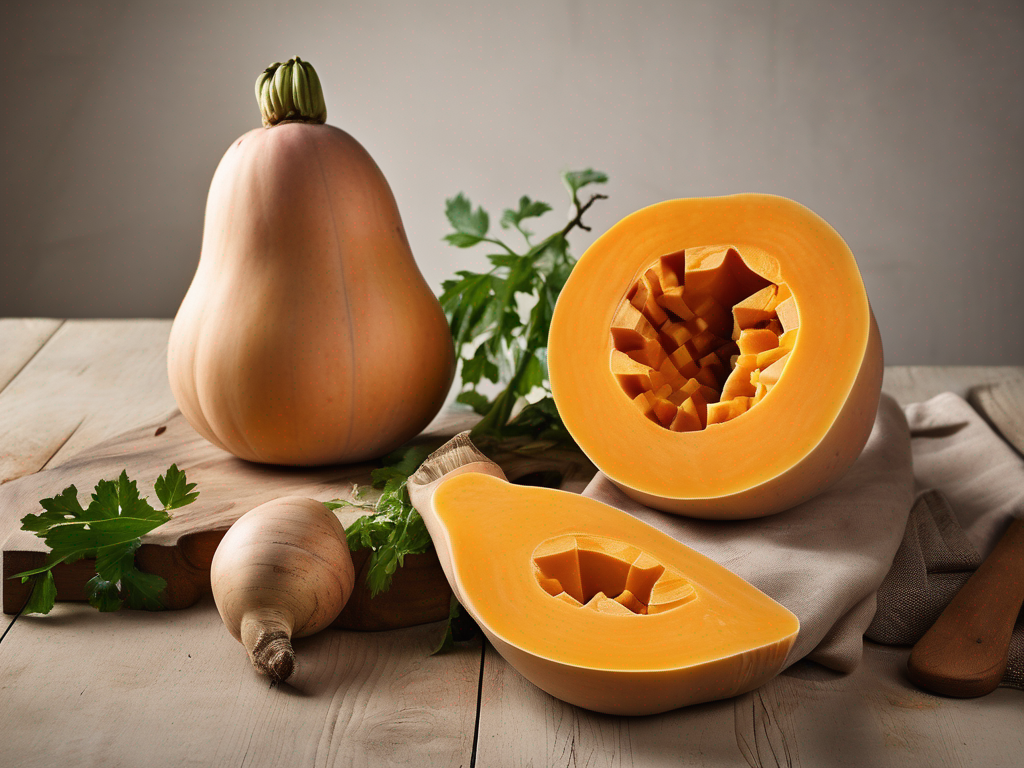
How to Properly Store Butternut to Extend Its Shelf Life
Stop Wasting €1,500+ Per Year on Food You Think is Expired
Get our 16-page guide with exact timelines for 70+ foods. Know instantly what's safe to eat—no more guessing.
How to Properly Store Butternut to Extend Its Shelf Life
Butternut squash is a versatile and nutritious vegetable that can be enjoyed in a variety of dishes, from soups to salads to casseroles. To make the most of this delicious ingredient, proper storage is key. By following some simple guidelines, you can extend the shelf life of butternut squash and ensure that it stays fresh and flavorful for longer. In this blog post, we will discuss the best practices for storing butternut squash to help you enjoy its goodness for weeks to come. (Butternut)
Understanding Butternut Squash
Before we delve into the storage tips, let's first understand a bit more about butternut squash. Butternut squash is a type of winter squash that is known for its sweet, nutty flavor and creamy texture. It is rich in vitamins A and C, as well as fiber and antioxidants, making it a healthy addition to your diet. Butternut squash is typically harvested in the fall and can be stored for several months if done correctly.
Selecting the Perfect Butternut Squash
To ensure that your butternut squash stays fresh for as long as possible, it's important to start with a good-quality squash. When selecting butternut squash at the store or farmer's market, look for the following characteristics:
- Firm skin without any soft spots or blemishes
- A dull, matte appearance (shiny skin may indicate that the squash was picked too early)
- A good weight for its size (heavier squash tends to have more flesh and better flavor)
Storing Butternut Squash
Once you've chosen the perfect butternut squash, it's time to store it properly to extend its shelf life. Follow these tips to keep your squash fresh and delicious:
1. Store in a Cool, Dark Place
Butternut squash should be stored in a cool, dark place with good air circulation. A pantry, cellar, or basement is ideal for storing squash. Avoid storing it in the refrigerator, as the cold temperatures can cause the squash to spoil more quickly.
2. Keep it Dry
Moisture can cause butternut squash to rot, so it's important to keep it dry during storage. Wipe off any dirt or debris from the surface of the squash with a clean cloth before storing it. Make sure the storage area is dry to prevent mold growth.
3. Avoid Direct Sunlight
Exposure to sunlight can cause butternut squash to spoil prematurely. Store your squash in a dark place away from windows or direct sunlight to prolong its shelf life.
4. Check for Spoilage Regularly
Inspect your butternut squash regularly for any signs of spoilage, such as mold, soft spots, or discoloration. If you notice any of these issues, use the squash as soon as possible or discard it to prevent other squash from being affected.
5. Utilize Proper Air Circulation
Proper air circulation is essential for keeping butternut squash fresh. Avoid storing squash in plastic bags or airtight containers, as this can trap moisture and lead to spoilage. Instead, place the squash in a well-ventilated area to allow for adequate airflow.
Conclusion
By following these simple storage tips, you can extend the shelf life of butternut squash and enjoy its delicious flavor and nutritional benefits for longer. Remember to choose high-quality squash, store it in a cool, dark place with good air circulation, and check for spoilage regularly. With proper storage, you can make the most of this versatile vegetable and incorporate it into your favorite dishes all season long. (Butternut)
Related Posts
Here are some other articles you might find helpful:
Authoritative Food Safety References
These agencies and university labs inform every tip and health precaution we publish.
USDA FoodKeeper – Cold Storage Guidelines
Official refrigerator, freezer, and pantry timelines maintained by the U.S. Department of Agriculture.
Visit USDA FoodKeeperFDA Produce Safety Rule & Grower Guidance
Field-to-fridge handling practices that prevent contamination of fruits, vegetables, and leafy greens.
Visit FDA Produce SafetyCDC Foodborne Illness Prevention Hub
Surveillance-backed guidance on pathogens, symptoms, and steps to reduce foodborne illness risk.
Visit CDC Food SafetyUC Davis Postharvest Technology Center
University research detailing optimal storage atmospheres for produce after harvest.
Visit UC Davis PostharvestPenn State Extension – Home Food Preservation & Safety
Peer-reviewed extension bulletins on safe canning, chilling, and reheating practices.
Visit Penn State ExtensionStop Wasting €1,500+ Per Year on Food You Think is Expired
Get our 16-page guide with exact timelines for 70+ foods, 15 real-world scenarios, and troubleshooting tips. Know instantly what's safe to eat—no more guessing or Googling.
Scan your food directly and get instant safety info using our AI-powered camera feature.